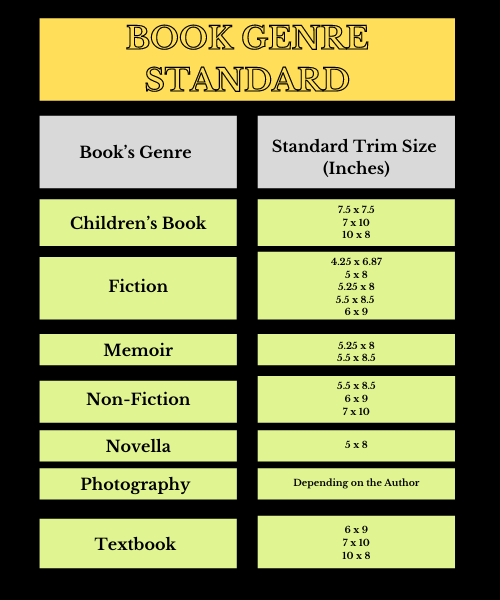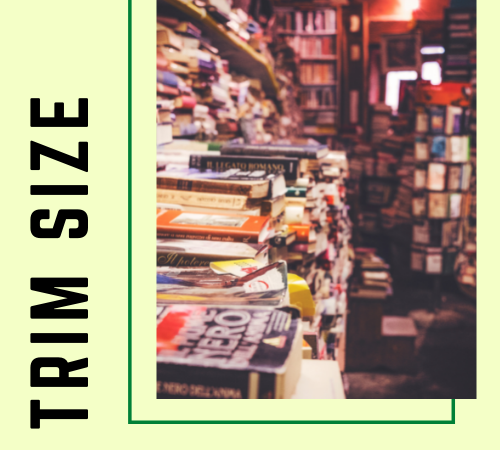Being at the library, bookstores or bookshops, you often see various books in multiple designs and sizes. These different sizes of books are what is referred to as a trim size. But how do you choose your book trim size?
Reasons can vary from different factors such as practicality, economic and artistic value. As an author choosing the suitable trim size for your book does matter. The overall experience of your target audience (reader) will be affected. What trim size you select will be aligned to the proper typesetting and the interior layout of your book.
Trim Size
The publishing term is called trim size, but it is widely known as book size. The dimensions of trim size are width by height, and the measurement is expressed in inches (U.S.) or millimeters (Europe). If the author chooses to accommodate more words on a page, a bigger page size is required. Additionally, the paper material and binding add to a book’s total weight and size.
Does Trim Size Matter?
A book’s trim size does matter. The trim size is critical for three reasons: (1) book’s marketability, (2) reader’s reading experience, and (3) book’s cost.
Reader’s Reading Experience
In short, the trim size determines the number of pages in your book. The larger the trim size, the fewer the pages that your books require. It also affects the book spine as the fewer the pages, the thinner the book spine is. Choosing a trim size for your book will have a rippling impact on the book’s interior. Many components must be positioned on the page, including the basic grid, the font size, etc. The page trim size is the crucial component of this delicate balance- and the first thing you will need to select will result in a stunning book.
Book’s Cost
There are additional reasons to be concerned about the size of your choice of trim. For one, it may influence your printing expenses. As a result, the size of your book may affect your profit margin.
Choosing Book Trim Size
Your trim size may be an individual choice since there is no “correct” method to decide the “optimal” trim size. With that stated, we’ve brought out a few significant factors to consider while you are making your choice.
Word Count
When choosing a trim size, consider your word count. A general guideline: As your text’s length increases, you will have a larger trim size.
Financial Impact Considerations
Remember that print-on-demand presses charge according to the page count, so if you intend on printing digitally, be sure to prepare ahead of time. If your book has more pages, the cost of printing will be higher, and your profit margin will be lower.
Book Genre Standard

The trim size should be sized per usual genre standard because readers are on the lookout for the next book to read; they are sure to be drawn to what is known.
Since making your book match prospective readers’ expectations is a sure way to boost sales, examine the standard dimensions of your particular genre before choosing a book trim size that is drastically out of the ordinary of your genre.
Are you looking for a literary agent? Handing your book to publishers is a daunting task. However, companies like Quantum Discovery can help you with your needs when it comes to having your book delivered to the right publisher. Contact our professionals by calling (888) 755-6875 or visit quantumdiscovery.net to know more.
